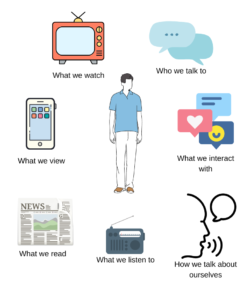Are children struggling more, post-pandemic?
Over recent weeks I have had a huge number of conversations about children’s mental health and the increase that parents and professionals are seeing in:
- Anxiety
- Health anxiety
- Separation Anxiety
- Phobias
- Emotionally Based School Avoidance
- Low mood
- Worries and fears
For many, the question is ‘why?’
You may have also noticed that adults are less tolerant, more irritable, snappy, angry or annoyed right now?
During the pandemic, the impact of information all around us fed into the reptilian part of the brain ‘the amygdala’. The amygdala asks only two questions:
- Am I safe?
- Am I happy?
Think for a moment of what we were surrounded by:
- New bulletins daily with death counts
- Information not to touch those we loved or they would die
- Having to stay home ‘to keep people safe’
- Radio shows dedicated to the news of covid-19
- TV broadcasts throughout the day
- Newspapers with deaths on the front pages
- Conversations daily about lockdown
- Changes to all routines
- Wearing masks everywhere they went
- Disruption to the normality
When we consider our mental health, this is impacted by what we see, hear, say, do and feel.

For nearly two years, children’s immature brains, which are predominantly focussed on their amygdala (fight/flight) and their limbic brains (feelings) responded to the world around them. For that two years, we overstimulated their fight-flight centre, wiring it to feeling unsafe. Wiring it to being cautious – hesitant – scared.
So, why didn’t we see it then?
During lockdown, some children DID process what was happening. We saw an immediate spike in mental health referrals directly after the lockdown. However, for many, during lockdown they were not in fight/flight mode (which is most obvious) but instead, were in freeze or fawn mode. Children either:
- Dissociated and numb from what was happening around them
- Doing their best to please everyone and follow the rules in hope to make things better
In January, we reached one year of normality. Masks no longer fill our newsfeeds, hands-face-space posters are no longer adorned on every wall. Simply, everyone is thawing out.
And, as they thaw out, their feelings which were suppressed during lockdown, keeping them safe from the stress, are coming to the surface.
Which means that right now, there are a number of people struggling. However, the further from lockdown we move, the harder it is to appreciate the impact that it had on so many people as the world has kept spinning and life has shifted.
Therefore, our focus needs to shift onto:
- Stress management
- Regulation
- Calming the nervous system
- Increasing emotional literacy
The healing process is not overnight, however, it does need to become one of our priorities to help everyone move forward.
Want to learn more?
If you want to learn more about mental health you can join our Level 4 training (here) or keep an eye out for our new specialist online courses coming soon (here).
© Dandelion Training and Development – All Rights Reserved
 Further help
Further help
For more articles about mental health visit – ARTICLES
To learn more about child and adolescent mental health visit – COURSES
For resources to support child and adolescent mental health visit –RESOURCES
